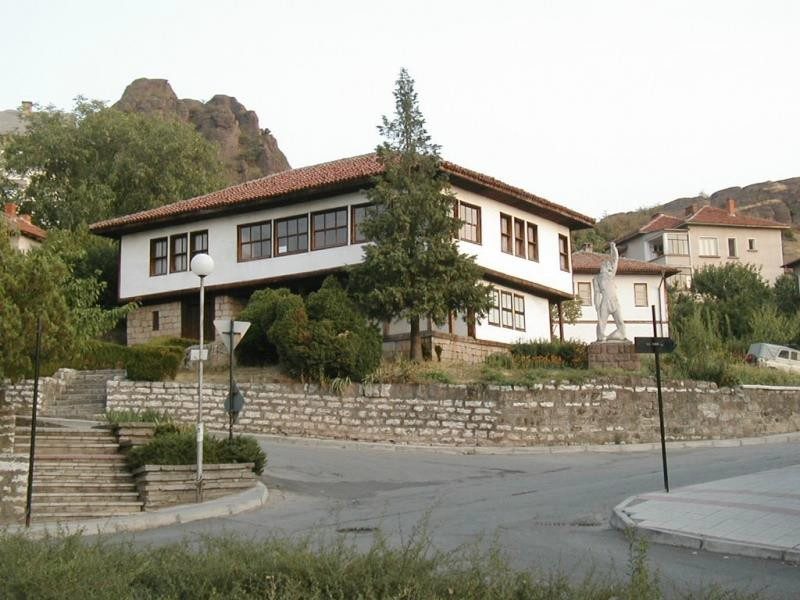

Belogradchik History Museum is housed in the cultural monument of “Panov’s house” – a bright representative of Renaissance architecture. It was built in 1810. It has two floors with walls padded with boards, two verandas with laurel, and the first and second floor are built of stone.
This architectural jewel of Belogradchik is remarkable for its popular culture and lifestyle, its search for beauty and for bulgarians desire for freedom during the Bulgarian National Renaissance. The exhibition introduces us to the socioeconomic development of Belogradchik and of the region from eighteenth – nineteenth centuries. Boards with wooden plow, threshing rolls – both designs of Austro-Hungarian traveler Felix Kanitz, give us an idea of how the land was cultivated and how the grain were harvested. Attention is paid to the animal husbandry as their principal occupation of the area as well as to the cultivation of vineyards, crops of cotton and other crops. The focus is on the growth and development of crafts: blacksmiths, homespun, pottery, old fashioned blacksmiths, not only ordinary tools / cutting knives, sickles, axes / but also impressive decorations – candlesticks, pottery with interesting shape and impressive artistic decorations, different pitchers, bowls, vases and others. The coppersmiths craftsmen offer us a variety of forms of kettles, jugs, plates and others.Some of them are characterized by craftsmanship, precision and specific decorations.
The most sacred place in Panov’s house – the fireplace – with its iron and clay features, influence us to attract the fire and holiness of the Bulgarian meal. In Belogradchik in eighteenth – nineteenth centuries have worked skilled goldsmiths masters. They made religious objects from silver and gold: crosses, ornaments, icons, fittings for the gospels , and various household items and jewelry.
The high demand for their ability to combine different polychrome materials using different techniques, forging, casting, watermarking, speaks aesthetic tastes and opinions. The beauty and brilliance of exposed objects made of gold, the ornaments for women from the second half of the crown period, elements from the 18th century for the bride, earrings, bracelets, buckles, gives us a picture of that period charm. According to the fragments of the carved ceiling wall of the “Haji Hussein” mosque, is indicated the year 1751 and remember us the tragic love story of its builder, master Stoyne. This draw attention also through the museum’s collection of icons. “The biggest monastery” has icons of “St. George”, “Virgin and Child”, the result of the creative genius of artists from Tryavna and Debar. Panov’s house still resonates the patterns and colors of the bulgarian carpet and national costume. The exhibition offers a rich tangible and documentary material reflecting our people’s struggles against Ottoman rule in the first half of the 19th century. The history of those six villages in Belogradchik goes up to 1806. There are wars in 1821, 1833 in 1836, the Puyovata uprising in 1849. It reigns the anxiety and detaching from the Hajduk Veljko, Stoyan Voyvoda, and rebel Balcho. Panov house keeps the epic memory called “our year 1850.” We have priceless relics , the rod of a revolutionary, sword of Petko Smith , this glorious and heroic period impregnated with the smell of freedom, a number of documents and graphs that clarify the nature, meaning and resonance of the people’s uprising, then european since 1850 in north-western Bulgaria, centered in Belogradchik. Then there were the important moments of the events in Belogradchik during the Russo-Turkish War – Belogradchik siege until early January 1878, Belogradchik fortress artillery shelling on 13th and 14th of January, negotiations between warring parties and the solemn Russian-Romanian meeting on February 25th, 1878. The story of the exhibition ends with photos and documents reflecting the struggles from Belogradchik during the Serbo-Bulgarian War in 1885. The Lapidarium from the courtyard of Panov’s house drives us back to the era of ancient Rome and its spiritual world.
